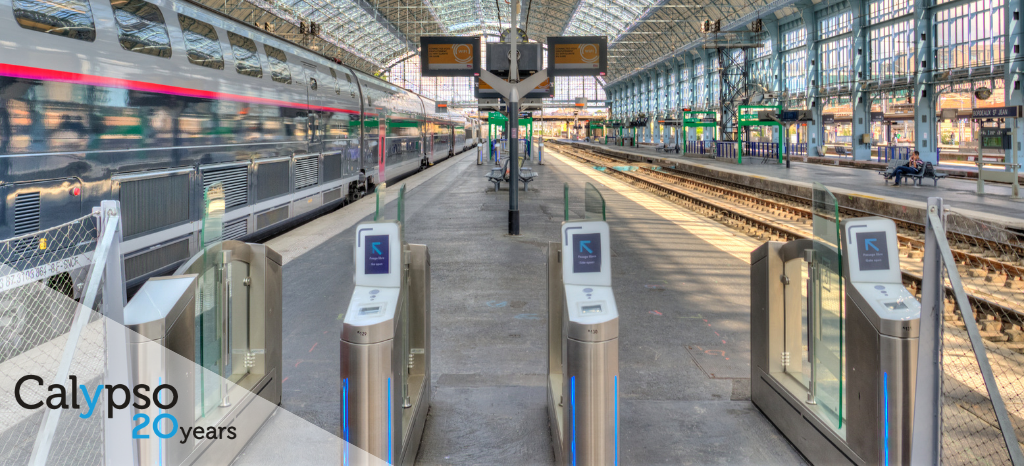
Why networks are reluctant to cede control to closed-loop EMV ticketing
- By Gianluca Cuzzolin
- In
A new Special Report by Mobility Payments has highlighted that, despite an industry push, closed-loop EMV® ticketing is not yet showing the strong adoption rates that some anticipated. Urban transit planners looking to provide advanced transport ticketing solutions for their passengers need to consider what aligns with the needs of their community. In our experience, the demographics of most urban communities is diverse, which leaves room for both open- and closed-loop solutions. For transport networks that have more than one fare structure to manage, or cross-border considerations, oversimplifying things will not help. Inclusive options that put networks in control and enable choice for all passengers are what’s needed. Let’s explore…
Open-loop and closed-loop ticketing
Providing choice and access for all passengers is paramount to the success of public transport. In recent years, four main ticketing options have come to the fore:
- Closed-loop, proprietary ticketing
- Closed-loop ticketing based on open standards
- Closed-loop ticketing based on white-labelled EMV cards
- Open-loop ticketing (where passengers use existing EMV bank cards for payment)
Closed-loop EMV ticketing is based on specifications built primarily for the global payments industry – not for public transport ticketing – and do not allow you to write data into the card (it only allows you to read it). Typically, this type of closed-loop setup only supports the simplest form of account-based ticketing (ABT), which risks excluding some passengers.
ABT is a great tool to enable very simple implementation of fares adapted to all types of usage, but it should not be linked with a medium that does not allow data to be written on it. This simplistic form of ABT often leads to critical operating problems – something that has been cited by ticketing integrators who have implemented it in large networks. Being able to write data into the card during validation significantly enhances the performance of the ABT solution.
What’s more, transport operators and authorities do not want to become overly dependent on payment schemes. They are increasingly recognising the importance of a simple and diverse ticketing offering to provide an optimised passenger experience and facilitate mobility inclusion.
By offering a range of options to passengers, networks can create a solution that remains agile to market changes and technological evolutions. It also allows them to support multiple different fare mediums, ensuring that they do not exclude people from travel based on access to technology or a bank account.
True open standard closed-loop technologies enable operators and authorities to combine account-based and card-based ticketing into their system, avoiding a dependency on the reliability of communications networks and a central system. It is important for transport networks to retain ‘sovereignty’ over their ticketing system, which can also enable vital efficiencies (for example, managing a season ticket with closed loop-based mediums based on open standards comes at a much lower cost than via EMV ABT).
Calypso also enables passengers to access a mix of every tariff type, including subscriptions, locally stored value and pay-as-you-go, all delivered with the same level of high performance and data privacy safeguards.
Ticketing created by and for the transport community
A unique aspect and advantage of Calypso open standards is that they have been – and always will be – created by the transport ticketing community, for the transport ticketing community, evolving directly with mobility needs while removing inherent risks of proprietary systems.
For example, a key priority to the transport ticketing community is speed, and getting people through turnstiles as quickly as possible has always been at the heart of CNA’s technical work. While EMV-based transactions typically take less than half a second, contactless transactions made using Calypso typically take just 0.1s-0.2s, providing a secure, faster and more convenient way for passengers to pay for public transport.
There is no ‘one size fits all’ solution here and it is also important to note that Calypso does not work in isolation and wherever possible there is a desire to optimise the solutions and technology already available. For example, the security certification for Calypso HCE is based on robust mobile security programmes set up by the banking sector. This includes the Software-Based Mobile Payment Evaluation Process (SBMP) from EMVCo, which supports contactless payments made using connected consumer devices and digital wallets.
While adoption of closed-loop EMV ticketing solutions remains low, we anticipate that a hybrid of open-loop and closed-loop solutions based on open standards could become widespread worldwide. One thing that will certainly be in place is CNA’s continued commitment to empowering transport operators, authorities and mobility providers to achieve a simple, secure ticketing system for all, built on open standards.
It is defined by the transport community for the transport community to deliver intuitive, efficient ticketing, with the transport network in control. Learn more about the role, offering and governance of Calypso in the CNA Handbook: https://bit.ly/3U59xXl

